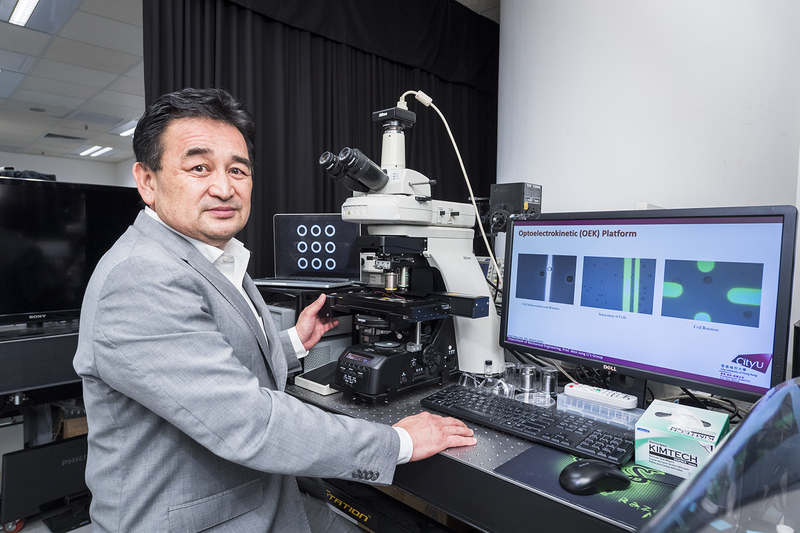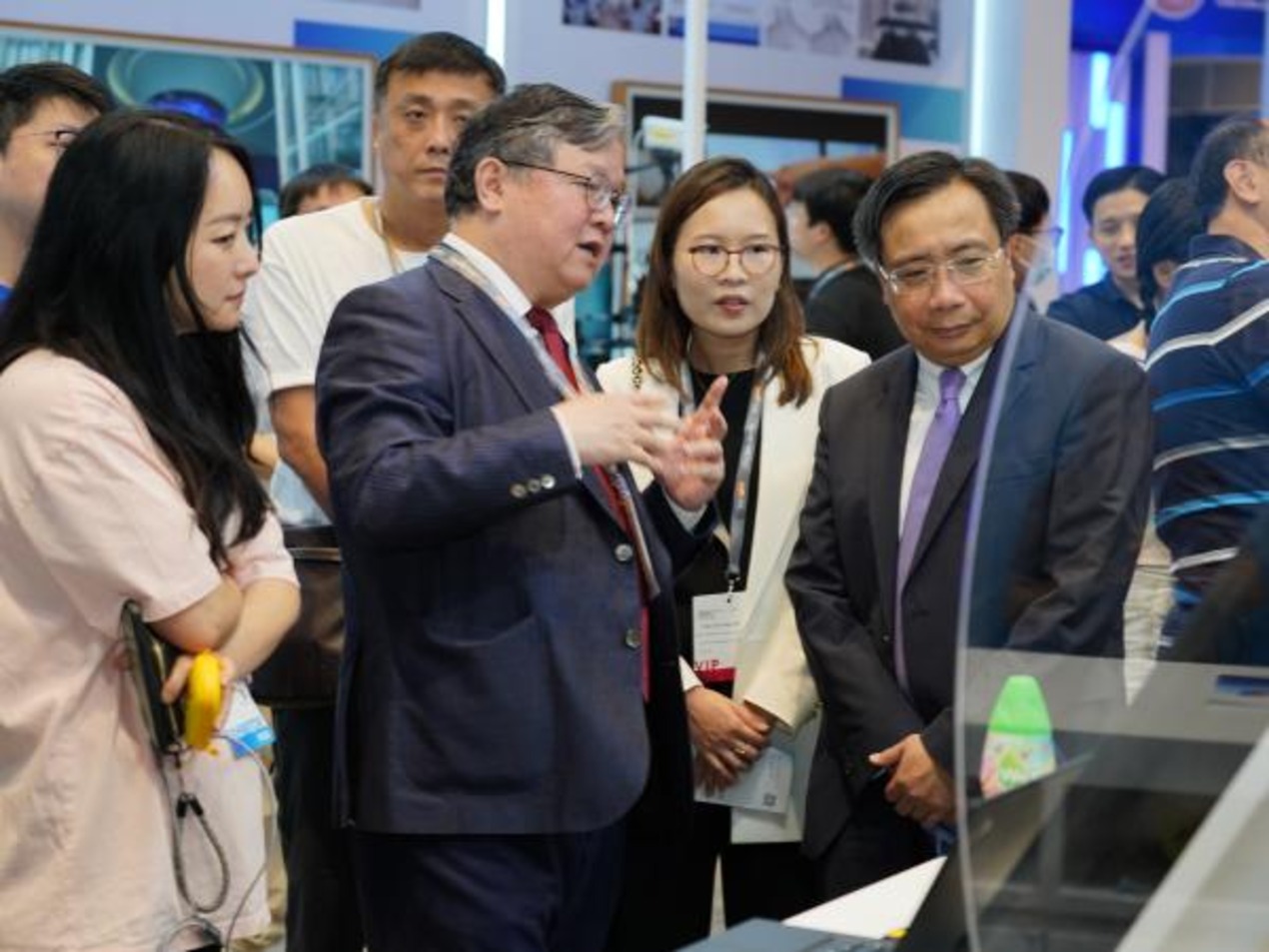
A new method for identifying gastric cancer cells within minutes and more accurately than by using traditional methods is underway at City University of Hong Kong (CityU).
Led by Professor Li Wen Jung of the Department of Mechanical Engineering and Associate Provost (Institutional Initiatives), with collaborators from the Shenyang Institute of Automation (SIA) of the Chinese Academy of Sciences (CAS) and First Hospital of China Medical University (FHCMU), the research has recently been published in Science Advances.
Around 800,000 deaths a year are recorded worldwide from gastric cancer, the third-highest rate among cancer deaths. The novel procedure developed by the joint team uses a new kind of optically induced electrokinetic (OEK) microfluidic method to isolate cancer cells from the stomach area. Gastric cancer is often hard to diagnose because current approaches are not sensitive enough to spot malignant cells.
However, the OEK method is a new technique that could be integrated with “lab-on-a-chip” systems that offer researchers opportunities to manipulate objects within micro- and nanoscale bioengineering environments.
The rationale for applying OEK to gastric cancer is that these cells are not the same size and, crucially, possess different electrical characteristics to other cells in the peritoneal region.
When compared to traditional methods for spotting gastric cancer cells, the team’s OEK microfluidic method is more sensitive when looking at electrical characteristics. Using this technique, they have been able to separate gastric cancer cells from other cells in six patients with ascites [abnormal build-up of abdominal fluid] with a purity of over 70%.
The new method is appealing because it is quick and non-invasive. In fact, within five minutes, it can separate out the gastric cancer cells on the OEK microfluidic chip.
The study has benefited from working with doctors and patients at the FHCMU in Shenyang where medical staff have been impressed with the results. The principal collaborator from the FHCMU is Professor Wang Zhenning, who is also a co-contact author on the publication. The hope is that this new research will speed up the diagnosis of gastric cancer and save lives.
The aim is to reduce the number of deaths due to gastric cancer, one of the leading causes of cancer deaths worldwide, the Professor stated, a co-contact author on the publication titled “Detection and isolation of free cancer cells from ascites and peritoneal lavages using optically induced electrokinetics (OEK)”.
Lab-on-a-chip technology
A lab-on-a-chip (LOC) is a device that integrates one or several laboratory functions on a single integrated circuit (also called a “chip”) of only millimetres to a few square centimetres to achieve automation and high-throughput screening.
Research on lab-on-a-chip focuses on several applications including human diagnostics, DNA analysis and, to a lesser extent, the synthesis of chemicals, an international microfluidics innovation centre notes. The miniaturization of biochemical operations normally handled in a laboratory has numerous advantages, such as cost efficiency, parallelization, ergonomics, diagnostic speed and sensitivity. The emergence of the lab-on-a-chip field mainly relies on two core technologies: microfluidics and molecular biology.
Microfluidic technologies used in lab-on-a-chip devices allow for the manufacturing of millions of microchannels, each measuring mere micrometres, on a single chip that fits in your hand. The microchannels enable the handling of fluids in quantities as low as a few picolitres as well as the manipulation of biochemical reactions at very small volumes. Of course, to enable all of these operations, lab-on-a-chip devices are not just a collection of microchannels. They also require integrated pumps, electrodes, valves, electrical fields and electronics to become complete lab-on-a-chip diagnostic systems.
According to a leading global market research firm, the Lab-On-A-Chip Market is expected to account to be worth US$9.40 billion by 2027 and growing at a CAGR of 7.90% in the forecast period are majorly driven by the increasing application of lab on chip devices in the medical field. Another report also notes that the Global Lab-on-a-chip Market will rise from Covid-19 crisis at a moderate growth rate from 2020 to 2027.
















